

9th december 2021
[Interview] French general practitioners can now prescribe music as part of the overall pain management of patients suffering from chronic diseases. On 15 October last, Music Care concluded a partnership with SANOFI. This means that their digital, non-medicinal solution, a pioneer in the management of pain through music, can be prescribed by general practitioners and used outside the hospital environment. We went to meet Stéphane Guétin, President and Founder of Music Care and also a doctor in clinical psychology and a music therapist. The Music Care application is currently used in 500 hospital departments around the world.

How was Music Care started?
Music Care was started in 2008 as a result of a process: I started working in day care centres in difficult areas of Paris. As a musician from a family of musicians and doctors, I quickly realised that music had a strong influence on our behaviour, particularly that of children. During my music therapy studies in Montpellier, I did an internship in the rheumatology department of the city's university hospital. There I discovered active and receptive techniques using music in the patient's care. I had access to the first randomised studies on the effects of its impact on the patient's chronic pain. These were studies conducted abroad (Canada and the United States). Pain is thus defined as an unpleasant sensory and emotional experience. The finding of these studies was that analgesic treatment plays a role in the sensory and not the emotional. We started to use these studies in France which showed that music acts as the most important emotional stimulus. It reduces stress and improves the patient's condition. Between 1999 and 2003, the first clinical studies of pain relief with music were carried out in the Resuscitation, Neurology and CETD departments of the Montpellier University Hospital. We therefore realised that we could further optimise the use of music by studying in more detail which parameters improved the condition of patients. The instrumental version of music is the most suitable for treating pain. This is achieved by means of three parameters: the musical synchronisation of heart rate, breathing rate and blood pressure.
"Music, a universal language, leads the patient to relaxation’’
How does the association between music and neuroscience work?
With Music Care, we have developed a digital therapy based on a music composition algorithm. The patient can choose the preferred style. The piece is then composed and orchestrated to act on the pain. The aim is to counter-stimulate the unpleasant emotion with a positive emotion. All our work is therefore based on the standardisation of a method that is both reproducible and customisable. Neuroscience has built up this musical listening correlated with relaxation techniques and non-medicinal interventions that are increasingly used in hospitals. Music, a universal language, leads the patient to relaxation. The application works via the "U-sequence" technique which is the common core of Music Care. The music composition is orchestrated at 90 BPM to change the patient's state of consciousness. Our composers then reduce the tempo in stages using lower and lower frequencies to induce the listener to sleep. Then comes the awakening phase with an increase in tempo.
Below: Afrotherapy at Tony Allen Studio and David Bismuth's Rêverie with Music Care - Extracts from U-shaped sequences –
How does the relationship with patients work?
By optimising the listening relationship via a triangular format: patient, practitioner and music. So there is this listening time so that they can verbalise their emotions. This is to create a dialogue, a social link. This is the original value of music.
"The benefits of music are recognised by the WHO and all the studies point in the same direction''
For which pathologies can Music Care be used?
There are no limits to its use. Music Care is used for all types of health problems and in many hospital departments: intensive care, paediatrics, Alzheimer's and ophthalmology for people from birth to 99 years old.
What fields of application can Music Care evolve in?
The 21st century has seen many advances in the study and understanding of emotions. Music is a major key to understanding the human brain. New techniques allow us to optimise its use. This art, thanks to the numerous studies, will really integrate the care pathway and the management of patients. The benefits of music are now recognised by the WHO* and all the studies point in the same direction. Caregivers should be trained to use it as part of the treatment process, as a complement to medication. This association between music and medication sometimes makes it possible to reduce doses. It must always be an individual approach, it must be adapted to the person being treated. Since 15 October 2021, we have signed a partnership with SANOFI, which has analysed our various studies, and doctors can now prescribe it. It is not yet reimbursed but this could be the next step.
*The WHO recognised on 11 November 2019 that "Art can be beneficial to health, both physical and mental. This is one of the key findings of a new report from the WHO Regional Office for Europe, which analyses evidence from over 900 publications from around the world.It is the most comprehensive review of the evidence base on arts and health to date‘‘. The organisation found, by taking into account the various studies: "that listening to music or artistic performances limited the side effects of cancer treatments, including drowsiness, lack of appetite, shortness of breath and nausea". But also that "in emergency rooms, artistic activities (music, crafts, clowns, etc.) helped to reduce the level of anxiety, to fight pain and to lower blood pressure, particularly in children, but also in their parents". Finally, another important element in this recognition of benefits is that "dance has been repeatedly shown to significantly improve motor scores in people with Parkinson's disease".
The Centre Européen de Musique
The Centre Européen de Musique's mission includes research in the fields of science, health and music. A scientific advisory board, consisting of some twenty eminent specialists from various disciplines, has already been appointed and is already active. In a second phase, In cooperation with leading international research institutions, the CEM laboratory will benefit from direct proximity with musicians and artists. It will offer scientists from around the world unique surroundings dedicated to the development of scientific and medical knowledge around music, with a specific focus on brain plasticity, learning and memory. The laboratory will be complemented by therapeutic and athletic facilities which, through music, will serve to promote the development of preventive and curative methods for the treatment of autism, pathologies linked to the practice of music, or even neurodegenerative diseases such as Parkinson’s and Alzheimer’s.
9th december 2021
[Interview] French general practitioners can now prescribe music as part of the overall pain management of patients suffering from chronic diseases. On 15 October last, Music Care concluded a partnership with SANOFI. This means that their digital, non-medicinal solution, a pioneer in the management of pain through music, can be prescribed by general practitioners and used outside the hospital environment. We went to meet Stéphane Guétin, President and Founder of Music Care and also a doctor in clinical psychology and a music therapist. The Music Care application is currently used in 500 hospital departments around the world.

How was Music Care started?
Music Care was started in 2008 as a result of a process: I started working in day care centres in difficult areas of Paris. As a musician from a family of musicians and doctors, I quickly realised that music had a strong influence on our behaviour, particularly that of children. During my music therapy studies in Montpellier, I did an internship in the rheumatology department of the city's university hospital. There I discovered active and receptive techniques using music in the patient's care. I had access to the first randomised studies on the effects of its impact on the patient's chronic pain. These were studies conducted abroad (Canada and the United States). Pain is thus defined as an unpleasant sensory and emotional experience. The finding of these studies was that analgesic treatment plays a role in the sensory and not the emotional. We started to use these studies in France which showed that music acts as the most important emotional stimulus. It reduces stress and improves the patient's condition. Between 1999 and 2003, the first clinical studies of pain relief with music were carried out in the Resuscitation, Neurology and CETD departments of the Montpellier University Hospital. We therefore realised that we could further optimise the use of music by studying in more detail which parameters improved the condition of patients. The instrumental version of music is the most suitable for treating pain. This is achieved by means of three parameters: the musical synchronisation of heart rate, breathing rate and blood pressure.
"Music, a universal language, leads the patient to relaxation’’
How does the association between music and neuroscience work?
With Music Care, we have developed a digital therapy based on a music composition algorithm. The patient can choose the preferred style. The piece is then composed and orchestrated to act on the pain. The aim is to counter-stimulate the unpleasant emotion with a positive emotion. All our work is therefore based on the standardisation of a method that is both reproducible and customisable. Neuroscience has built up this musical listening correlated with relaxation techniques and non-medicinal interventions that are increasingly used in hospitals. Music, a universal language, leads the patient to relaxation. The application works via the "U-sequence" technique which is the common core of Music Care. The music composition is orchestrated at 90 BPM to change the patient's state of consciousness. Our composers then reduce the tempo in stages using lower and lower frequencies to induce the listener to sleep. Then comes the awakening phase with an increase in tempo.
Below: Afrotherapy at Tony Allen Studio and David Bismuth's Rêverie with Music Care - Extracts from U-shaped sequences –
How does the relationship with patients work?
By optimising the listening relationship via a triangular format: patient, practitioner and music. So there is this listening time so that they can verbalise their emotions. This is to create a dialogue, a social link. This is the original value of music.
"The benefits of music are recognised by the WHO and all the studies point in the same direction''
For which pathologies can Music Care be used?
There are no limits to its use. Music Care is used for all types of health problems and in many hospital departments: intensive care, paediatrics, Alzheimer's and ophthalmology for people from birth to 99 years old.
What fields of application can Music Care evolve in?
The 21st century has seen many advances in the study and understanding of emotions. Music is a major key to understanding the human brain. New techniques allow us to optimise its use. This art, thanks to the numerous studies, will really integrate the care pathway and the management of patients. The benefits of music are now recognised by the WHO* and all the studies point in the same direction. Caregivers should be trained to use it as part of the treatment process, as a complement to medication. This association between music and medication sometimes makes it possible to reduce doses. It must always be an individual approach, it must be adapted to the person being treated. Since 15 October 2021, we have signed a partnership with SANOFI, which has analysed our various studies, and doctors can now prescribe it. It is not yet reimbursed but this could be the next step.
*The WHO recognised on 11 November 2019 that "Art can be beneficial to health, both physical and mental. This is one of the key findings of a new report from the WHO Regional Office for Europe, which analyses evidence from over 900 publications from around the world.It is the most comprehensive review of the evidence base on arts and health to date‘‘. The organisation found, by taking into account the various studies: "that listening to music or artistic performances limited the side effects of cancer treatments, including drowsiness, lack of appetite, shortness of breath and nausea". But also that "in emergency rooms, artistic activities (music, crafts, clowns, etc.) helped to reduce the level of anxiety, to fight pain and to lower blood pressure, particularly in children, but also in their parents". Finally, another important element in this recognition of benefits is that "dance has been repeatedly shown to significantly improve motor scores in people with Parkinson's disease".
The Centre Européen de Musique
The Centre Européen de Musique's mission includes research in the fields of science, health and music. A scientific advisory board, consisting of some twenty eminent specialists from various disciplines, has already been appointed and is already active. In a second phase, In cooperation with leading international research institutions, the CEM laboratory will benefit from direct proximity with musicians and artists. It will offer scientists from around the world unique surroundings dedicated to the development of scientific and medical knowledge around music, with a specific focus on brain plasticity, learning and memory. The laboratory will be complemented by therapeutic and athletic facilities which, through music, will serve to promote the development of preventive and curative methods for the treatment of autism, pathologies linked to the practice of music, or even neurodegenerative diseases such as Parkinson’s and Alzheimer’s.


Playlist